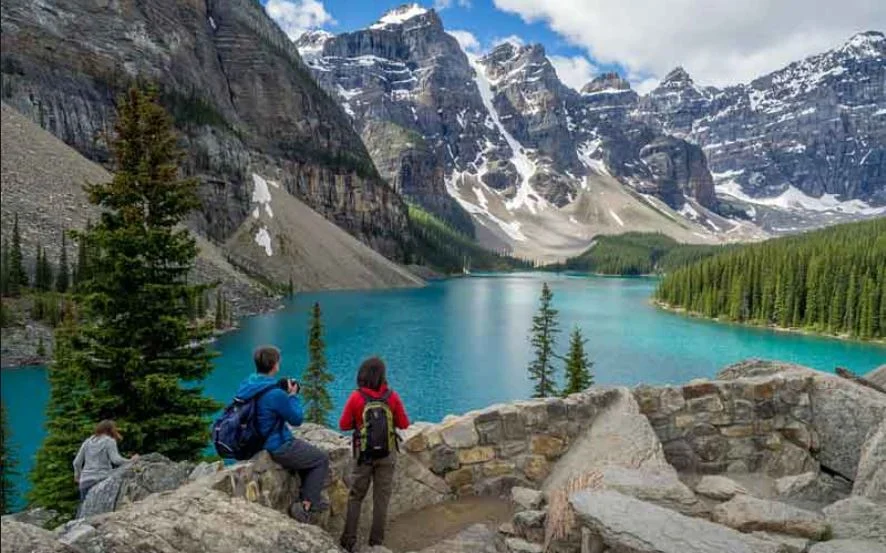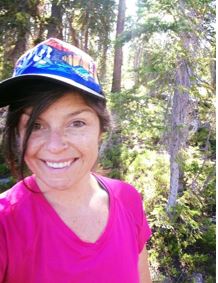Many would agree that autumn is the best time to go backpacking. The weather may be slightly more unpredictable at higher elevations, but if you time it just right, you will be rewarded with ideal temperatures, cold-weather sleeping, wildflowers, leaves changing colors and skipping out on bug season. Hopefully, at this point you have also been hiking for most of your summer and your legs are prepared for the additional weight. If you have ever wanted to try spending a self-supported night in the woods, give it a try this fall.
Training for Backpacking
It is difficult to just hit the trails with a fully loaded backpack and head up the nearest mountain if you haven’t taken the time to properly train. Obviously, getting out on to the closest hiking trail to your home is a great way to train for your upcoming trip. Start out with a simple day day pack with enough water and a few snacks. Over time, you can add more weight to your pack to strengthen both your back and legs. If you happen to live in an urban area where hiking trails are hard to come by, hit the gym and get on the stair climber. You don’t have to go fast for a stair climber to be effective. They will get your quads into shape in no time.
Evaluate the number of hikes that you have taken this summer. If you use a fitness app to track your mileage, it is easy to look back and see how fast you were moving and how far you would go each time that you took a hike. This will give you an idea of how fast that you will be traveling by reducing your average speed by one-third due to the additional weight that you will be carrying.
Destination Unknown
When you are looking for where you should go for your first backpacking trip, it can feel overwhelming with the amount of options. Choosing somewhere close to home can be beneficial for if you forget a necessary item or for the joys of having a shorter drive home after a long hike out. However, exploring beautiful hikes across North America can help you check off some of your bucket list early into your backpacking career.
For your first backpacking trip, try to limit it to 10 miles or less — the sweet spot is usually about 6 to 7 miles for beginners. When you are deciding on a trail, it is wise to look at the amount of elevation you will gain between the trailhead and your destination. The steeper the trail, the slower you will move and the more difficult the hike will be.
How to Pack Your Bag
The first thing to remember when packing your bag is to only bring the essentials. Every “little” thing weighs a few ounces, and those ounces add up to pounds that will weigh you down. You don’t need deodorant, and yes, you can wear the same clothes to hike out that you wore to hike in. Sticking to the five tips to live like a minimalist at home and applying it to your backpacking lifestyle will help to keep things simplified and organized. It is appealing to buy all the bright and shiny new gadgets that are marketed to gearheads but more than likely, you don’t need it. The great outdoors will provide everything that you need.
The rule of thumb is to pack your bag to be 30 percent of your body weight or less. For comfort, pack your bag to keep the heaviest items in your pack in the middle and closest to your back. Typically, from the bottom of your pack up, it is helpful to pack in the following order:
● Sleeping bag
● Cookset
● Food and water (heaviest and in the center)
● Tent
● Clothes
● Water pump
In the top of your pack should be all the items that may need to be accessible while you are hiking (i.e. sunscreen, bug spray, headlamp, snacks, raincoat, first aid kit etc.).
Backcountry Kitchen
Cooking in the backcountry is an art form for some, while others are content simply eating dehydrated meals that require only boiling water. There are a number of different brands available on the market, so don’t be discouraged if you don’t like the first one that you try. Luckily, a few of the newer companies are even offering vegan, gluten-free, and dairy-free options for those that have dietary restrictions. If you are concerned about the ingredients in your backpacking meals, consider making your own homemade protein bars to sustain your trip so you know exactly what you are eating.
If you are wanting to try your hand at becoming a backcountry chef, do yourself a favor and try your recipes at home before experimenting out in the field. Rice and beans may sound like a great idea, but cooking rice can take upwards of an hour if there isn’t any wind to pull heat from your camp stove. Pre-cooking grains can help eliminate cooking time but does add weight to your pack. Consider quick-cooking items such as ramen noodles or instant rice and adding dehydrated vegetables for a boost of flavor. For your meat fix, tuna in foil packaging and beef jerky are great lightweight protein sources.
It is very empowering to set out on your first backpacking trip. Setting up your own camp, cooking your own meals and braving the elements can provide each of their own set of challenges. You are guaranteed to learn things about your physical and mental limits that you have never been forced to do in your past. Put on your backpack, pick your route and enjoy the thrill of your first self-supported trip outdoors.
W.M. Chandler has a master’s in natural resources with certificates in environmental education and science communication. She writes passionately about nature and the outdoors, human connections and relationships, and nutrition.
Twitter: @wmchandler1212


